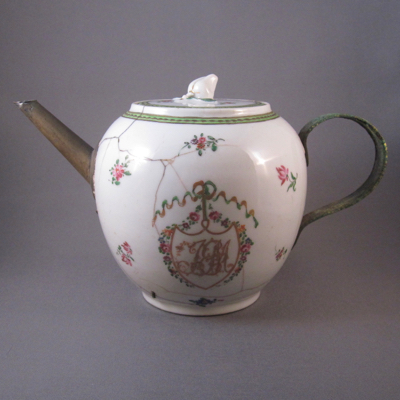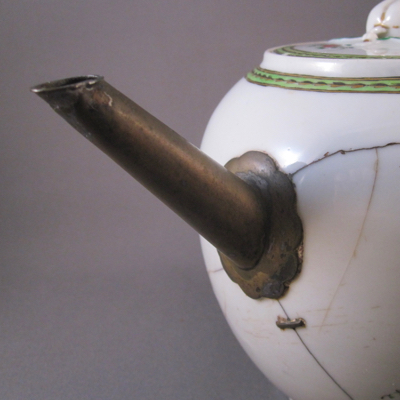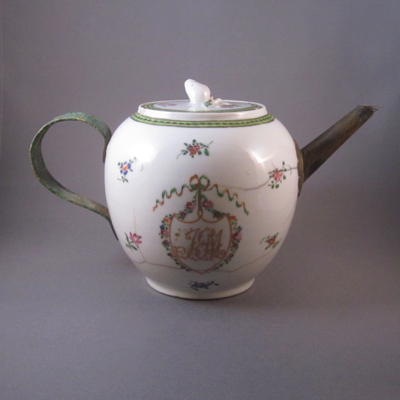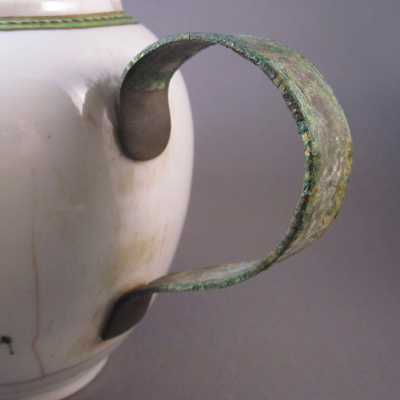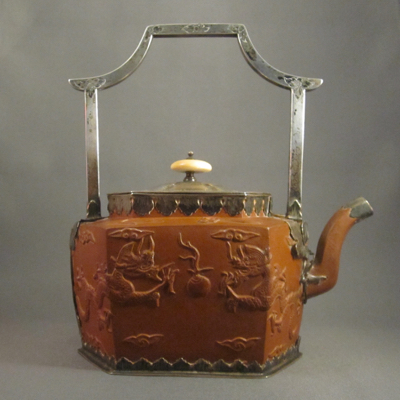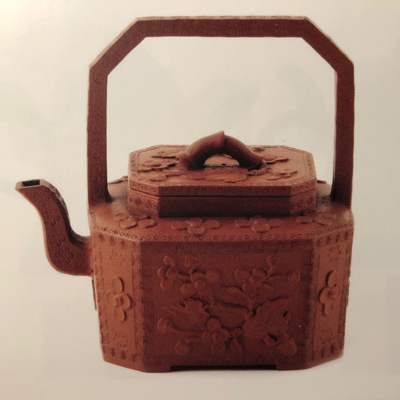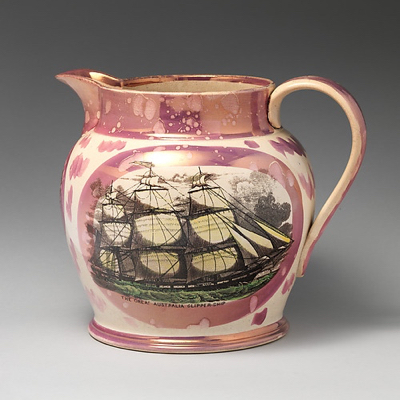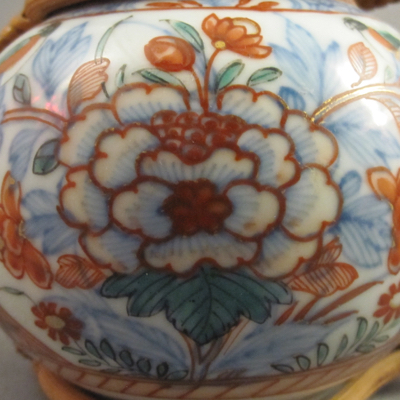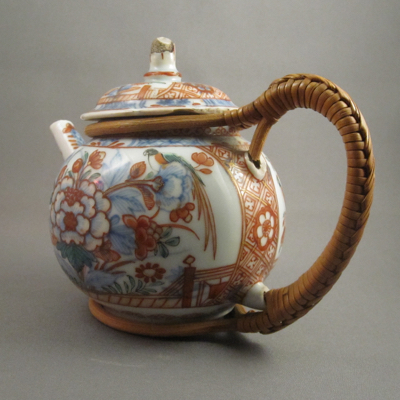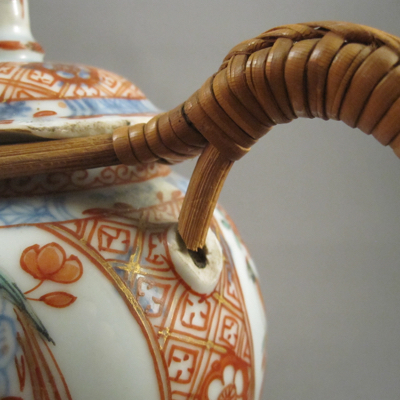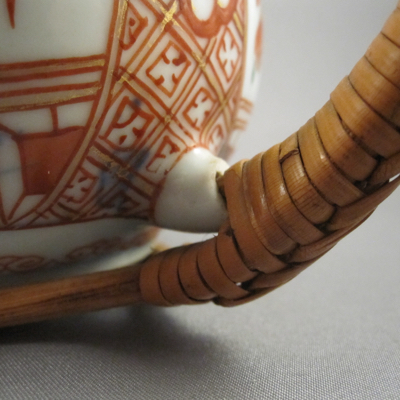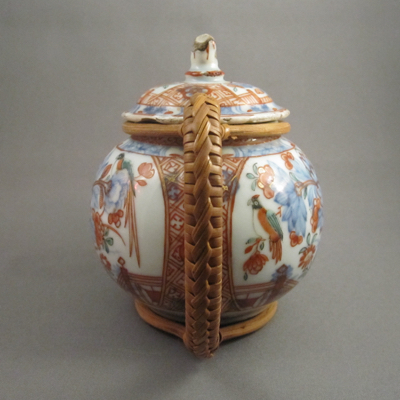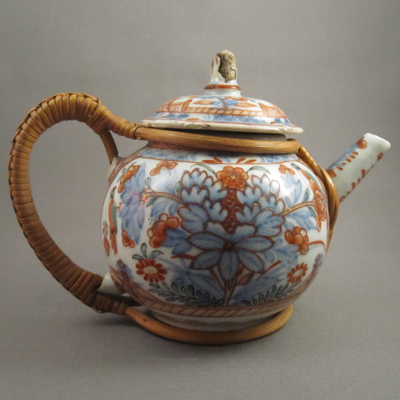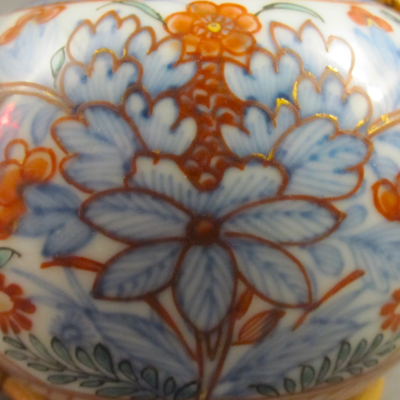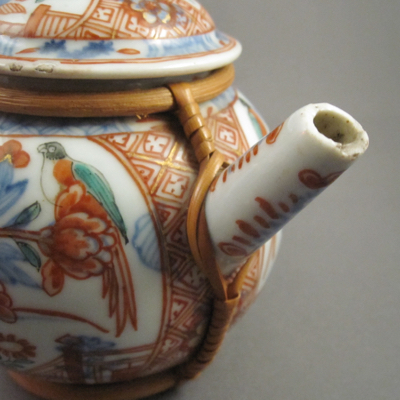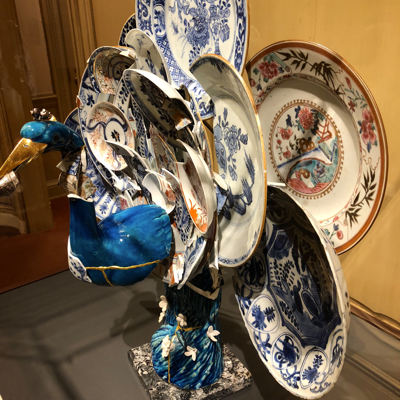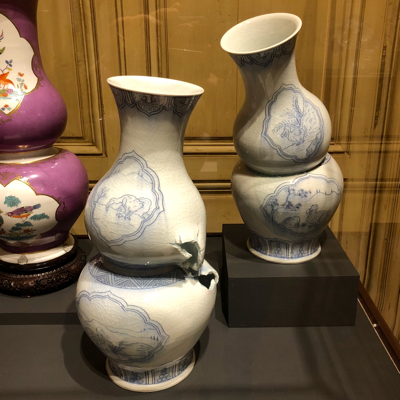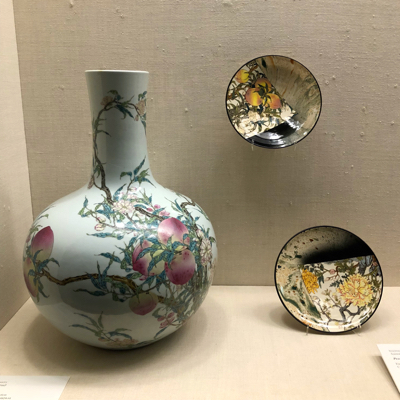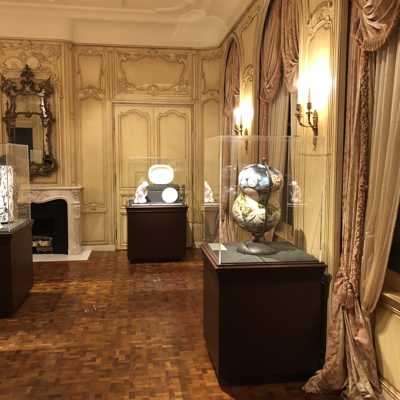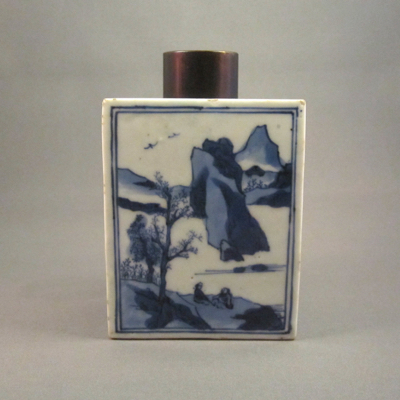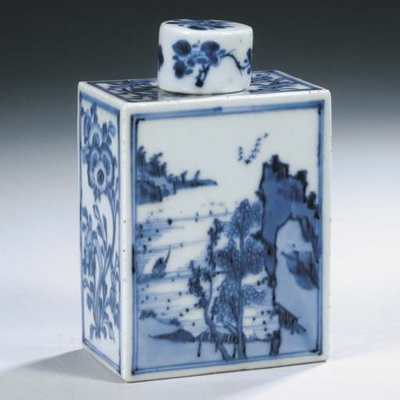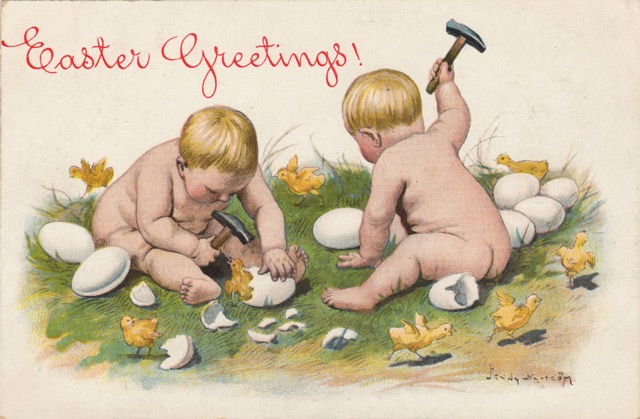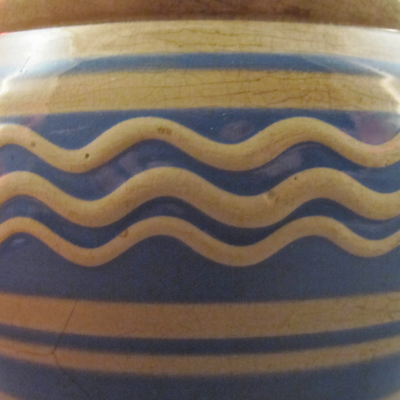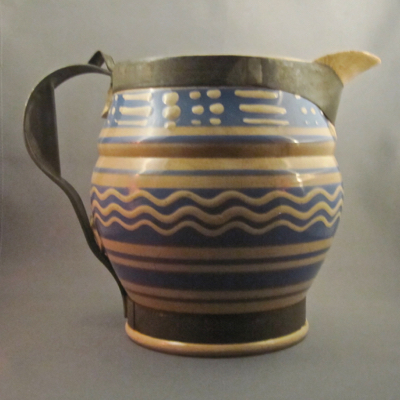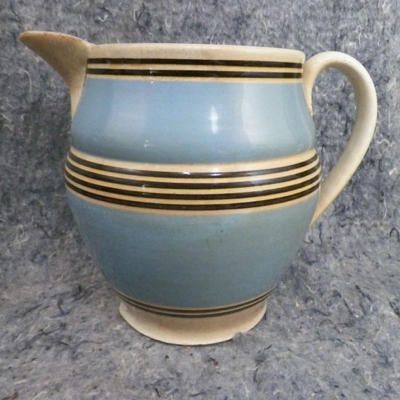This globular porcelain teapot was made in China for export, possibly for the French market, during the last quarter of the Qianlong period (1711-1799.) It measures nearly 5.5 inches high and is 8.75 inches wide from handle to spout. The delicate armorial decoration on each side consists of a gilt monogram (JEM) suspended from a shield surrounded by floral garlands and ribbons. The chipped lid has a peach shaped knob and is decorated with flowers.
It appears that on more than one occasion over the past 200+ years, this fragile teapot was rushed to surgery. The multiple repairs include a silver plated replacement spout with scalloped backplate, an iron replacement handle with a pleasing green patina, and 2 metal staples securing cracks on the body. Every surface of this noble survivor bears scars, which to me, makes it even more attractive and unique.
